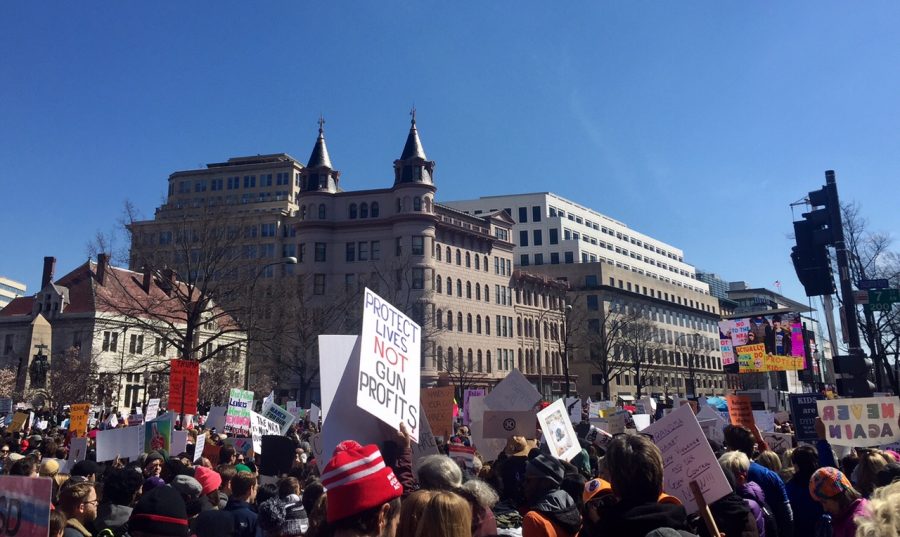The March for Our Lives
On a brisk March morning, approximately 200,000 people joined the student-led March for Our Lives protest in Washington D.C.
April 12, 2018
On March 24th in Washington D.C., thousands of people took to the streets to show support for the March for our Lives movement and join the students of Marjory Stoneman Douglas High School in their fight for gun control. People of all ages, ethnicities, and political backgrounds united for a common cause: passing common sense gun laws. In some places, there were so many people that there was barely space to stand. People climbed into bushes and onto buildings in an attempt to at least see a jumbotron if they weren’t near the stage where the speeches were taking place. The crowd’s energy never dwindled, with choruses of “vote them out” coursing through the crowd during each intermittence between speakers, a chant in reference to politicians who have taken money from the National Rifle Association.
Cameron Kaksy, a student at Marjory Stoneman Douglas High School and survivor of the recent shooting, was the first speaker of many. “Welcome to the revolution,” Kaksy told the jubilant crowd. His speech expressed hope for the future, saying “I see a system I will be proud of, but it all starts with you.” Other memorable speakers included 11-year-old Naomi Wadler, who delivered a moving speech commemorating the numerous African American women who have lost their lives to gun violence. “I represent the African American women who are victims of gun violence, who are simply statistics instead of vibrant, beautiful girls full of potential,” said Wedler. She and a classmate organized a walkout at their elementary school, adding a minute to the protest in honor of Courtlin Arrington, a 17-year-old girl who was shot at her school in Alabama.
Possibly the most notable orator, however, was Emma Gonzales, a senior at Stoneman Douglas who has become one of the most prominent faces of the March for our Lives movement. After her notorious “we call BS” speech delivered shortly after the shooting at her school, expectations for her speech were high. Gonzalez, however, shocked everyone. For just over four minutes, she didn’t speak at all. She began by commemorating the victims of the shooting (taking a little over two minutes to do so), and then, to the bewilderment of the crowd, stood in complete silence. A timer went off, and Gonzalez went on to explain that she had now been on stage for six minutes and twenty seconds, the same amount of time it took for Nicolas Cruz to gun down 17 of her teachers and classmates. “The shooter has ceased shooting, and will soon abandon his rifle, blend in with the students as they escape, and walk free for an hour before the arrest,” said Gonzalez, leaving the crowd with one final thought: “fight for your lives before it’s someone else’s job.”
Ultimately, the protest on March 24 was a powerful beginning to the March for Our Lives movement, and left those who attended with a feeling of hope for future generations and possibility of ending gun violence in America. In the future, it will be interesting to see how the movement continues its momentum and if it helps spur change in government practices regarding firearms.


